Guernia: description, types and varieties, reproduction and care
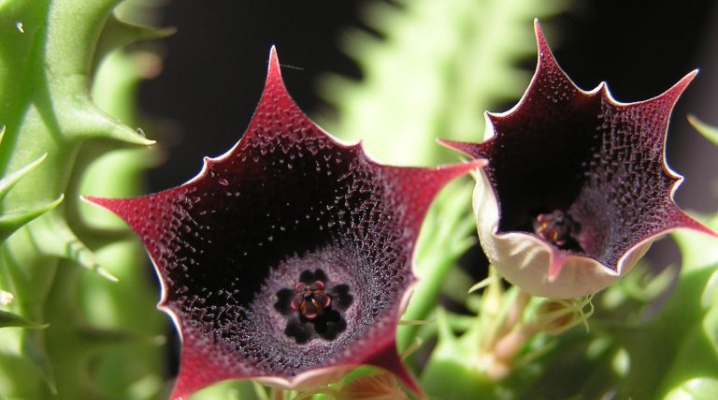
Succulents are considered one of the most picky and original houseplants today. They are easy to care for, do not require specific growing conditions, and at the same time often have bright and original inflorescences. Let's get acquainted with the description of such a succulent as guernia, as well as with the species, varieties and breeding characteristics of this flower.
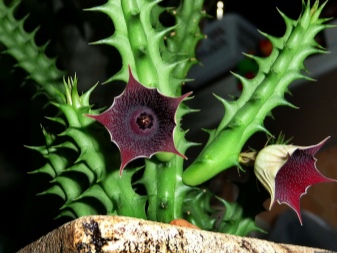
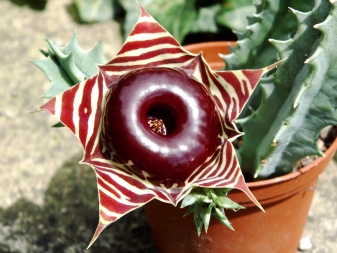
Description
Guernia (or guernia, huernia) is a genus of succulents from the Grimaceae family. These are perennial low-growing or medium-sized plants (up to 30 cm in height), light green shoots of which may have 4-7 ribs.
Guernia shoots can be creeping or erect. Each is covered with characteristic teeth (2 cm in diameter and 2 cm in length) of grayish, green or red color.
Guernia inflorescences consist of 2-5 flowers up to 7 cm in diameter each. The most common forms of flowers: crown, bell, star. In terms of color, flowers can be purple, lilac, white, sand and even black, as well as have burgundy, yellow, brown or red blotches and stripes. The pharynx of flowers can be decorated with characteristic growths (or papillae).
In its natural habitat, guernia can be found in the southeastern part of Africa. Today, botanists have about 60 varieties of this plant, with each species including separate varieties.
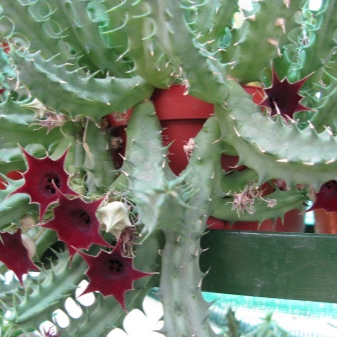

Types and varieties
At home, about 8 species and varieties are grown today. The features of each of them will be discussed below.
- Guernia is Kenyan. It is a low-growing plant with creeping stems up to 25-30 cm in length. Characteristic differences of the species: curved downward sharp teeth on the ribs of the stems, as well as inflorescences of large (up to 5 cm in diameter) velvety flowers (from 2 to 5 pieces) of red and purple colors. An additional feature is the almost fused sepals of a funnel-shaped form, covered on both sides with characteristic outgrowths.
The most popular are the Grandiflora and Globosa varieties.
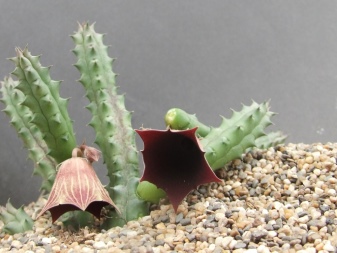
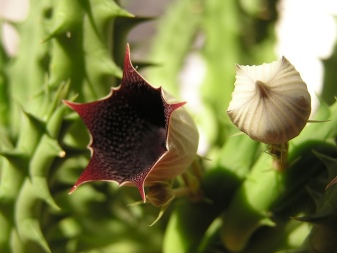
- Guernia is striped. Among florists, it is also called "zebrina". In its natural environment, this species grows in South-West Africa, where it is a stunted succulent with relatively thin stems (up to 2 cm wide). A distinctive feature of the species is single star-shaped flowers with an intergrown core. The latter are painted in dark red tones, closer to the edging and the edge of the petals, the color is complemented by yellow stripes.
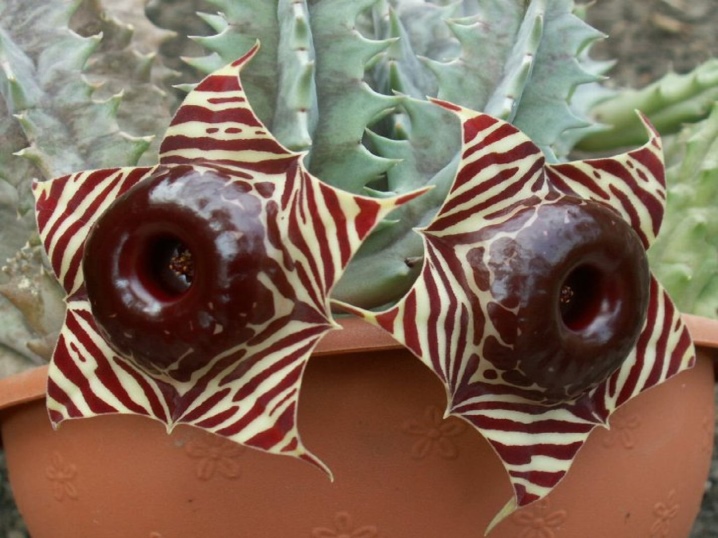
- Guernia is large-fruited. It is an erect variety with an average height of light green stems of 20 cm. The stems are characterized by 7 ribs with curved teeth. The inflorescences of the species can include up to 5 burgundy bell-shaped flowers up to 2 cm in diameter each.
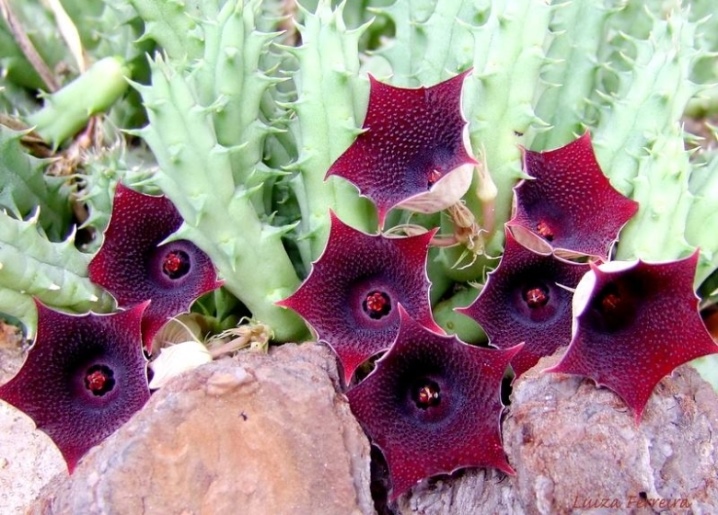
- Rough. It is a medium-sized plant with thin 5-ribbed shoots of light green color. The bell-shaped flowers of this guernia have 5 pointed pinkish or lilac petals.

- Hairy. Unlike other species, this guernia has thick and short stems of light green color, each of which is covered with a large number of long and thin teeth. It is this species that looks like a full-fledged cactus. Another feature of the species is the gradually reddening edges of the teeth. The inflorescences of the plant are star-shaped flowers (up to 5 cm in diameter) of red color.
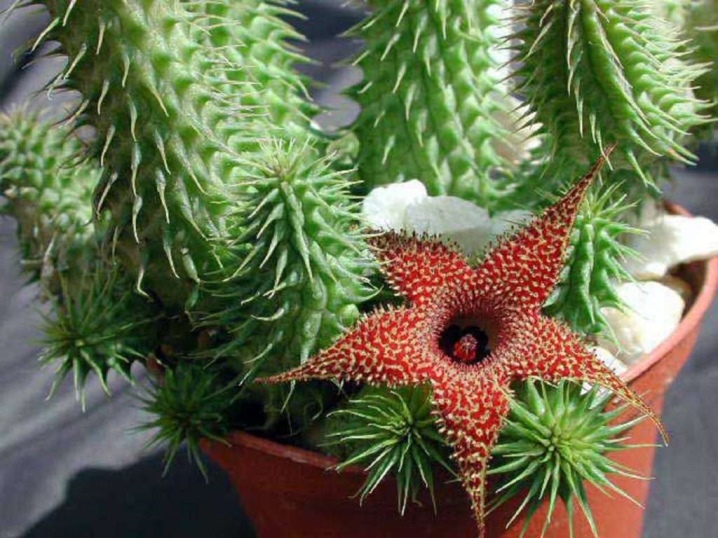
- Graceful. The variety is presented in the form of a low-growing plant with light green 4-5-ribbed shoots. Frequent teeth are located along the entire base of the stems. Flowers in this form have the shape of a crown and are painted in a sandy color with small burgundy blotches.
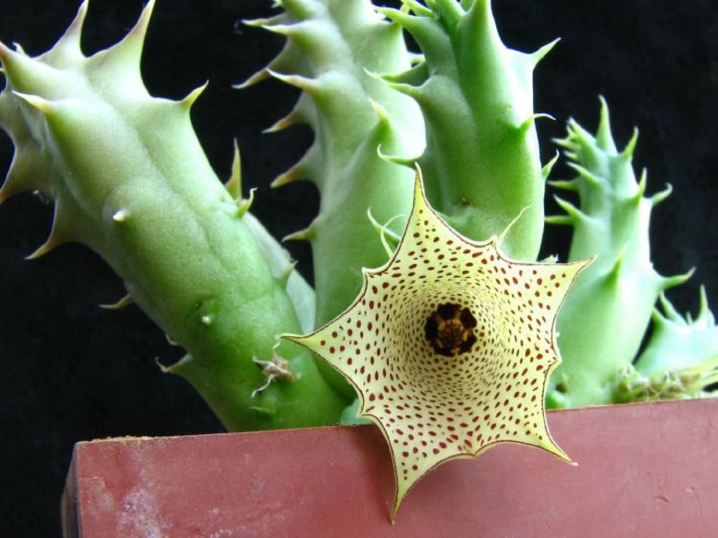
- Guernia is bearded. A low-growing plant (up to 6 cm in height) with large and thick teeth (up to 2 cm in width). The flowers are colored in sand or brown tones with characteristic burgundy stripes.
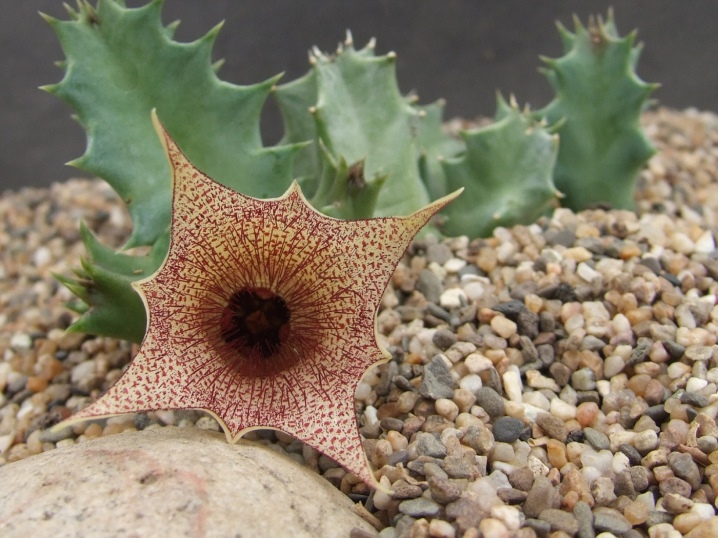
- Guernia erectus (or erectiloba). A low-growing plant, a distinctive feature of which is a specific smell, which many associate with the smell of rotten meat.
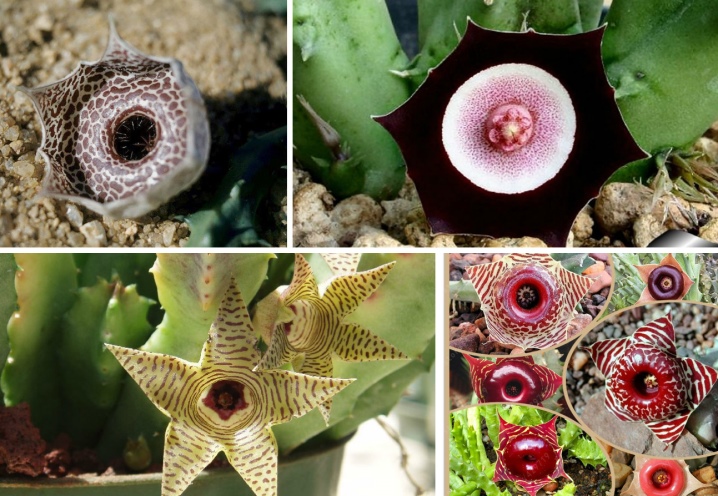
Care
Even a novice florist is able to cope with the cultivation of guernia. The key points in caring for this flower will be discussed below.
Illumination
Despite the fact that guernia naturally grows in partial shade of taller plants, when grown at home, this flower requires constant and natural sunlight. If, with an excess of lighting, the stems of this plant acquire a reddish tint, then with a lack of light, the guernia simply will not bloom or will form thin and weak shoots.
When growing guernia on a balcony or loggia on summer and hot days, it is recommended to place the plant in partial shade, especially from 11 to 16 hours. In addition, good ventilation must be observed in the place where this flower is grown. In the absence of fresh wind, aggressive sunlight can simply burn the flower.
At the end of the winter period and with the increase in daylight hours, the guernia needs to provide additional lighting in the form of phytolamps.
When choosing a location for installing a pot with this flower, it is better to choose east or west windows or loggias.

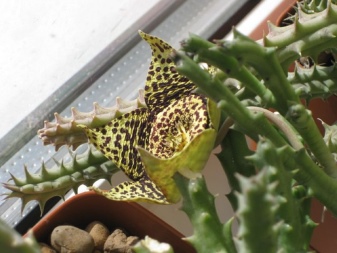
Watering
Almost all indoor succulents require watering only in the summer or when the earthen crust in the plant's near-stem circle is completely dry. The reason for such rare watering can be considered a predisposition of guernia to root rot. That's why watering the plant in autumn, spring and winter is carried out no more than 1-2 times a month.
With an excess of moisture, the stems of the plant will begin to wrinkle, and the shoots will lose color and may wither. In the case of this plant, the level of humidity in the air is also of great importance. In order not to provoke rotting, the humidity level in the room should be kept below average.
It is better to refuse spraying guernia stalks - it is better to remove all dirt and dust with an ordinary damp cloth.
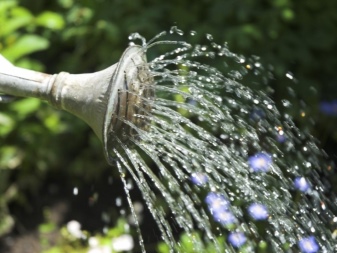
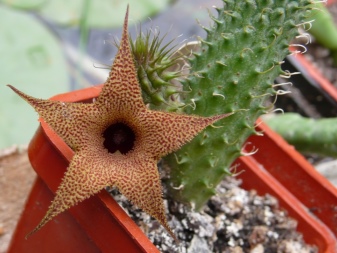
Top dressing
Experts advise fertilizing guernias no more than 1-2 times during the growing season and once at the beginning of the flowering period to form vibrant flowers. Top dressing is best done with liquid fertilizers specifically for succulents or cacti - necessarily with a high phosphorus content and a minimum amount of nitrogen.
After the flowering period (usually at the end of August), feeding should be completely eliminated.
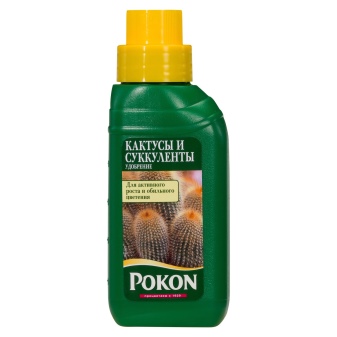
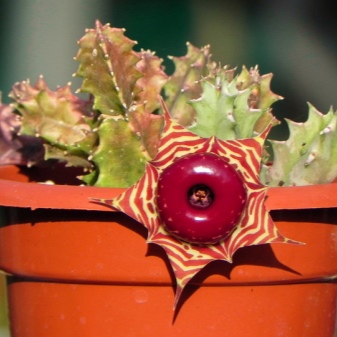
Temperature
A favorable room temperature is no less an important factor in growing this flower than the level of humidity. It should be said right away that Guernia belongs to thermophilic plants, and therefore in the summer season it feels great even at a temperature of + 26 ° C.
In order for the wintering of guernia to be successful and with minimal harm to the plant, the flower is transferred to a cool room with a temperature of no more than + 18 ° C and no less than + 10 ° C.
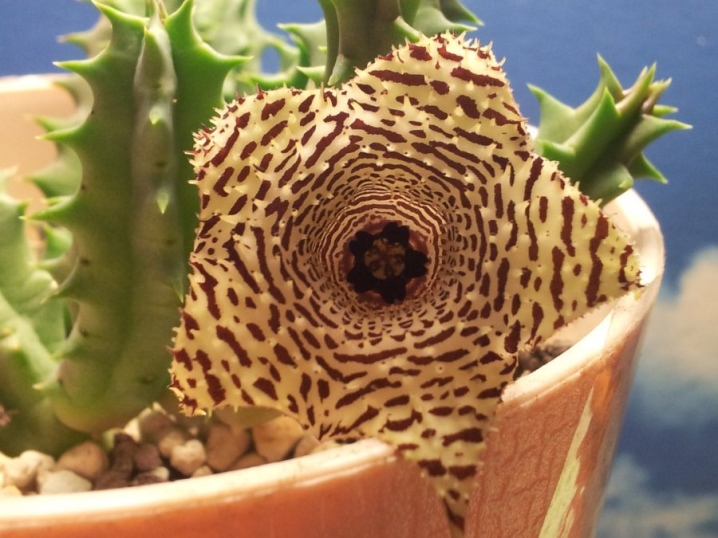
The soil
For the cultivation of guernia, loose, air-permeable soil is needed, which in equal proportions should contain turf, leaf humus, ordinary meadow soil, coarse river sand, charcoal, lime. To improve the drainage properties of the soil, you can add perlite, peat and pumice to it.
When growing guernia in a low pot, it is necessary to provide a high-quality drainage layer in the form of expanded clay, brick chips or the same perlite.
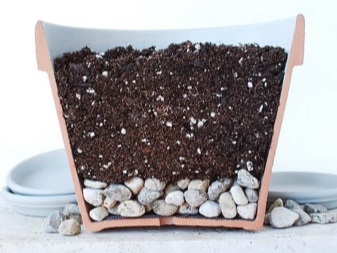
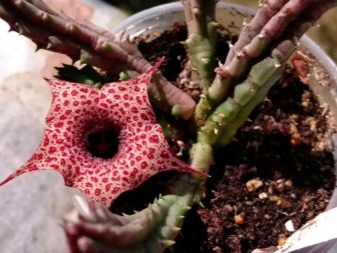
Transfer
Gardeners advise transplanting adult guernia no more than once every 2-3 years - this procedure is necessary to renew and enrich the soil and is useful as a prophylaxis. When transplanting a flower, you should choose a wider container than the previous one.
As for the transplantation of young guernias, it is carried out every spring before the onset of the flowering period. A change of soil to a more fertile one stimulates the growth of shoots and the appearance of buds.
During transplantation from guernia, it is advised to remove excess cuttings or processes that prevent the flower from growing. Some growers recommend pruning adult guernia stalks for health reasons.
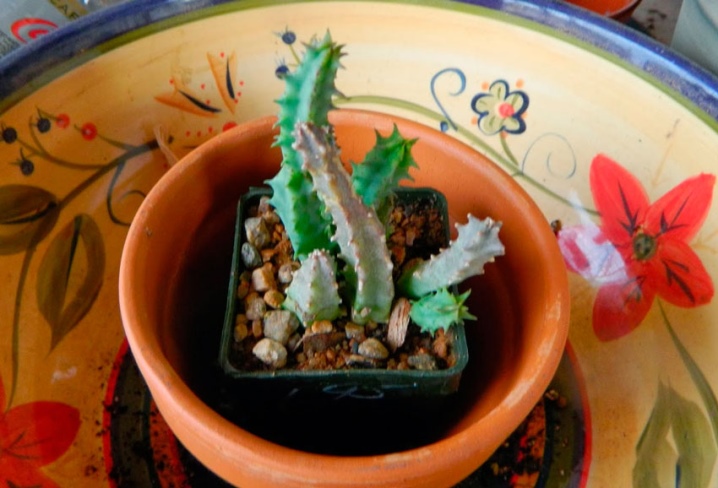
Reproduction
Guernia, regardless of the variety and variety, can be propagated in just two ways - using seeds and cuttings.
- With the help of seeds. The seeds are harvested approximately 3 weeks after the end of the flowering of the guernia. The planting material is planted in a flat container with loose and fertile soil. The seeds are distributed in containers at a distance of 3 cm from each other and buried in the ground to a depth of no more than 1 cm. The first guernia sprouts should appear approximately 4 weeks after planting the seeds. A month after the emergence of seedlings, the seedlings are planted in separate containers, where standard care procedures are carried out.
- Cuttings - a simpler and more popular method of breeding guernia. The procedure involves cutting off the upper, smooth parts of adult shoots without flower buds. After that, the cuttings need to be kept in a warm room for a day so that the cut point dries slightly. Then the planting material is placed in a moistened substrate of sand and peat. The first roots of the cuttings should appear after 2 weeks, after which they are transplanted into separate containers. Cutting cuttings should be done with a sharp and disinfected knife.
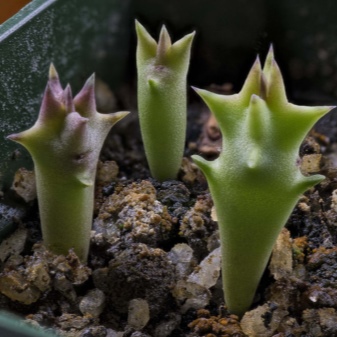
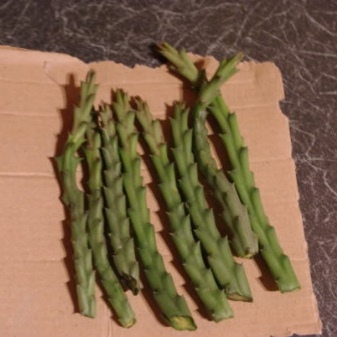
Diseases and pests
Most often, guernia suffers precisely from all kinds of root rot, which are common fungal diseases caused by high levels of humidity and insufficiently high external temperatures. The first symptoms of the manifestation of the disease are the formation of specks of gray and brown flowers on the stems of the guernia. If these spots are found or in case of local infestation, reduce the number of irrigations and remove all affected areas with a pruner.
The most dangerous pest for guernia, as well as for all home-grown succulents, is the so-called mealybug... This pest is a tiny white sucking insect, which an inexperienced grower may at first mistake for cobwebs. Scorms appear on guernia in the presence of dry air and low soil moisture levels.
To get rid of this pest, you can simply rinse the plant under a stream of warm water, or remove all pests and their larvae by hand with a cloth dipped in an alcohol solution. For more serious damage, spray the plant with Aktara or Inta-Vir insecticides.
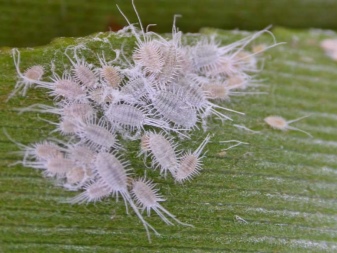
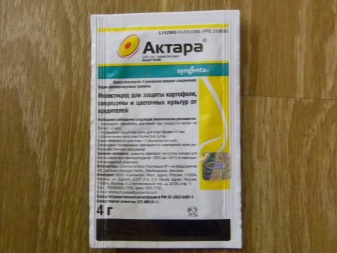
In addition, when growing guernias, you may experience lethargy and blanching of the plant stems. This could be a sign of excess moisture or lack of nutrients in the soil.
For more information on Guernia, see the next video.































The comment was sent successfully.